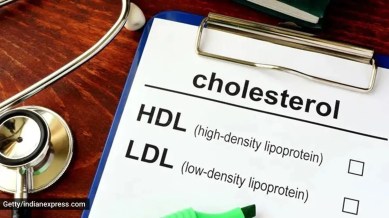Dr Varsha Koul, senior consultant, cardiology, Batra Hospital and Medical Research Centre noted that the epidemiology of cardiovascular disease in India is different from the western population
Considering the increase in cases of heart attack in recent years, it has become imperative to eat healthy, exercise, get preventive screenings done regularly, and then, interpret the medical reports correctly. As such, when we came across a social media post by cardiologist Dr Naveen Bhamri addressing how to read lipid profiles, we wanted to learn more, especially as the expert pointed out that understanding the lipid profile is crucial for assessing one’s risk of heart attack.
Lipid profile typically measures four key components: Total Cholesterol, Low-Density Lipoprotein (LDL), High-Density Lipoprotein (HDL), and Triglycerides. “Total cholesterol is the sum of all cholesterol in your blood. While it’s important, it doesn’t tell the whole story by itself. LDL, often referred to as ‘bad cholesterol,’ can build up in the walls of your arteries and form plaques, which can restrict blood flow and lead to heart attacks,” said Dr Suchismitha Rajamanya, lead consultant and HOD, internal medicine, Aster Whitefield Hospital, Bengaluru.
You have exhausted your
monthly limit of free stories.
Read more stories for free
with an Express account.
Invest in democracy. Full access to Express at just Rs 999/year
This premium article is free for now.
Register to read more free stories and access offers from partners.
Invest in democracy. Full access to Express at just Rs 999/year
This content is exclusive for our subscribers.
Subscribe now to get unlimited access to The Indian Express exclusive and premium stories.
According to Dr Bhamri, total cholesterol should be below 200, LDL should be below 100, triglycerides should be less than 150, and HDL should be more than 60 in males and more than 50 mg/dL in females. Agreed Dr Rajamanya, adding that while ideally, one’s LDL should be less than 100 mg/dL, “this target can vary based on individual risk factors”.
Notably, cholesterol helps remove fat from bloodstream. “High levels of HDL prevent cardiovascular diseases among those suffering from such ailments. An ideal level of HDL is 60mg/dl or more. Triglycerides are yet another category of fat in the blood system. If their amount increases, it can cause artery wall blockage or thickening, increasing the chance of getting stroke, heart attack and coronary heart disease. The standard level for is a normal triglyceride level below 150mg/dl,” explained Dr Rajamanya.
To interpret your lipid profile effectively, Dr Rajamanya suggested considering these values collectively and in the context of other risk factors such as age, family history, smoking, hypertension, and diabetes. “For a more personalised assessment, tools like the Framingham Risk Score can estimate your 10-year risk of a heart attack based on your lipid profile and other health indicators,” said Dr Rajamanya.
Dr Varsha Koul, senior consultant, cardiology, Batra Hospital and Medical Research Centre noted that the epidemiology of cardiovascular disease in India is different from the western population; studies show Indians tend to develop heart disease almost a decade earlier, despite having lower LDL cholesterol. Lipid provides critical insights into the probability of a heart attack.
The chances of one getting arterial blockages or heart disease are high when (TC) is found at levels above 240 mg/dL and LDL cholesterol is above 160 mg/dL. “Elevated risk is also presented by HDL cholesterol levels below 40 mg/dL. Other unfavourable lipid levels combined with high triglycerides (more than 200 mg/dL) are a particularly high-risk factor for cardiovascular disease,” said Dr Koul.
© IE Online Media Services Pvt Ltd
First uploaded on: 02-07-2024 at 09:30 IST












